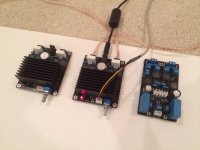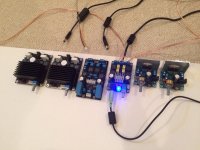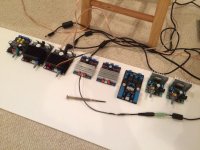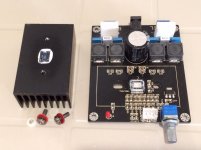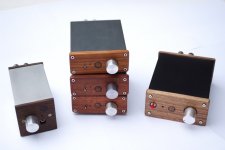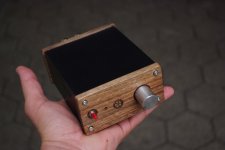a laptop brick should be available somewhere around for free.
any 12v dc psu from any device should be fine to begin with.
for home use 10w is usually enough.
better wait for good deal to pop up on ebay or ali.
any 12v dc psu from any device should be fine to begin with.
for home use 10w is usually enough.
better wait for good deal to pop up on ebay or ali.
What do you think of this pwr sup for the TDA7492 board?
4A To 6A 24V Switching Power Supply Board AC-DC Power Module Sale-Banggood.com
4A To 6A 24V Switching Power Supply Board AC-DC Power Module Sale-Banggood.com
It's all about context. This thread is about a $6 to $8 budget amp - you don't want to waste money on a fancy expensive power supply. Frankly, my $6 SMPS brick sounds fine to me. I have compared to smoother linear regulated supply and not a big difference because the amp is switching PWM scheme. Maybe for a class A, you need quiet supply and it is noticeable. If you notice even Nelson Pass says use of laptop SMPS is fine for ACA class A. He actually says to people who sneer "get over it!" 🙂
Is a $50 power supply better than a $6 SMPS brick ? Probably. Can you hear a difference with a $8 TDA7492? Probably not.
Sure mate, i'm mainly concerned about safety. (insulation, creeping distances, used parts)
I'd seen some cheap/expensive/genue laptop bricks in the past. The cheap ones are problematic regarding safety. Ever seen a cheap Mean-Well fake SMPS, you should and think over.
https://youtu.be/NGaGzQ-jtIM?t=5m50s
No matter if it works, but will it be safe? Getting a used "genue" brick would be the better way i think (i.e. getting a used Dell/Lenovo/IBM/etc. brick)
You might want to look at this:
https://www.youtube.com/watch?v=5vN_7NJ4qYA
For the rest im with you.
What do you think of this pwr sup for the TDA7492 board?
4A To 6A 24V Switching Power Supply Board AC-DC Power Module Sale-Banggood.com
Looks okay for using it in a isolated case. (heatsinks are not connected to earth)
Last edited:
Fun with Cheap Amps
I finally had time to test all the recent cheap amps that have arrived from Aliexpress and Amazon. I set up my 0.53x Karlsonator speakers fitted with Dayton 5in PA120-8 pro audio full range drivers. I found several power supplies for all the different amps: 12v, 19v, 24v, and made a 3-pin header to 3.5mm stereo jack. Set them all up side by side and listened to them one after another.
Amps included:
qnty 2 x TDA7498 (black heatsinks)
qnty 1 x fake YJ blueblack (Danzz) TPA3116D2
qnty 1 x SMAKN TPA3116D2
qnty 2 x 'lunch money' TDA7297 class AB
Here are TDA7498's and fake YJ blueblack:
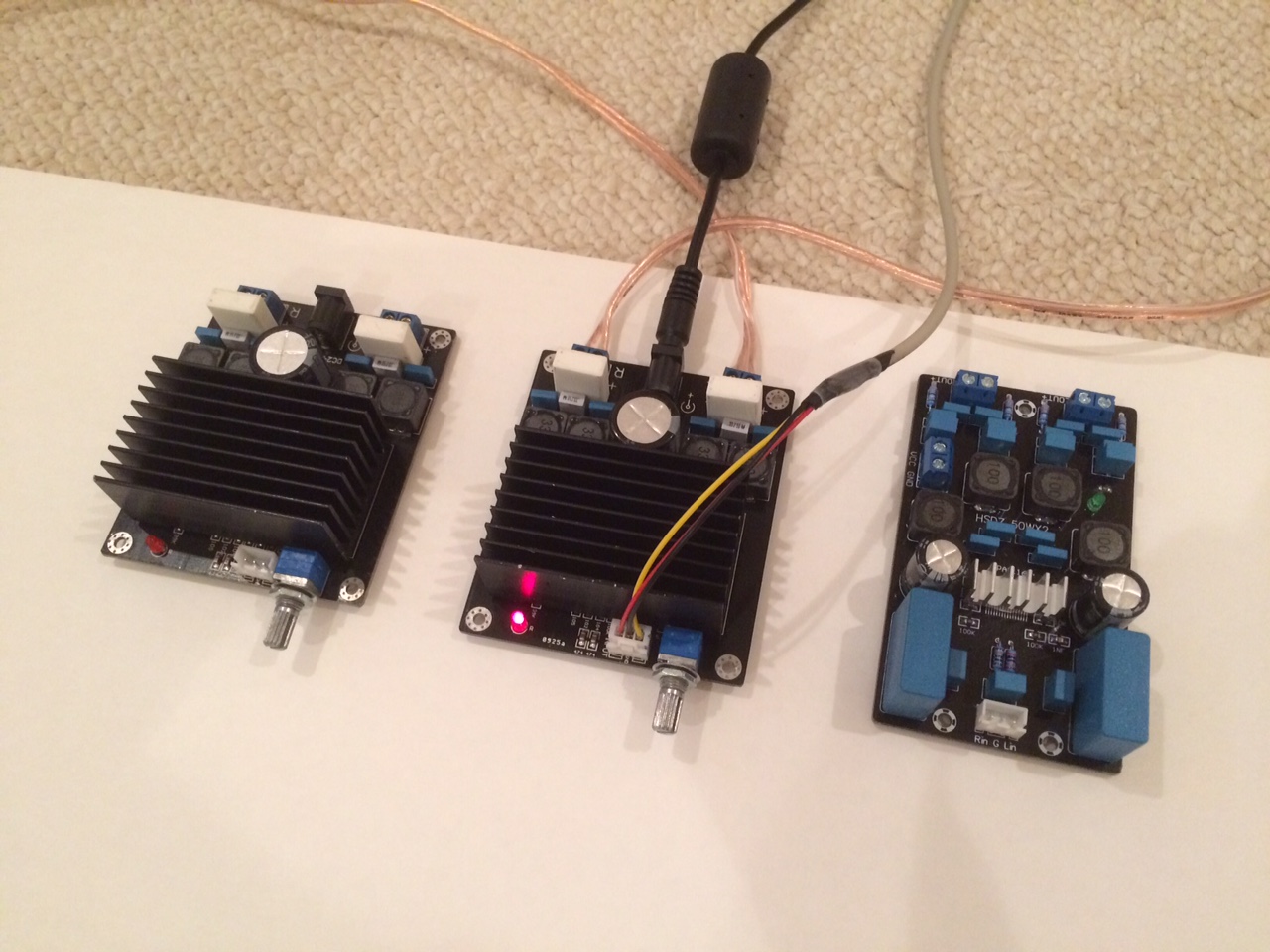
Here is the whole lot with SMAKN currently under test (note assortment of power leads and audio input leads):
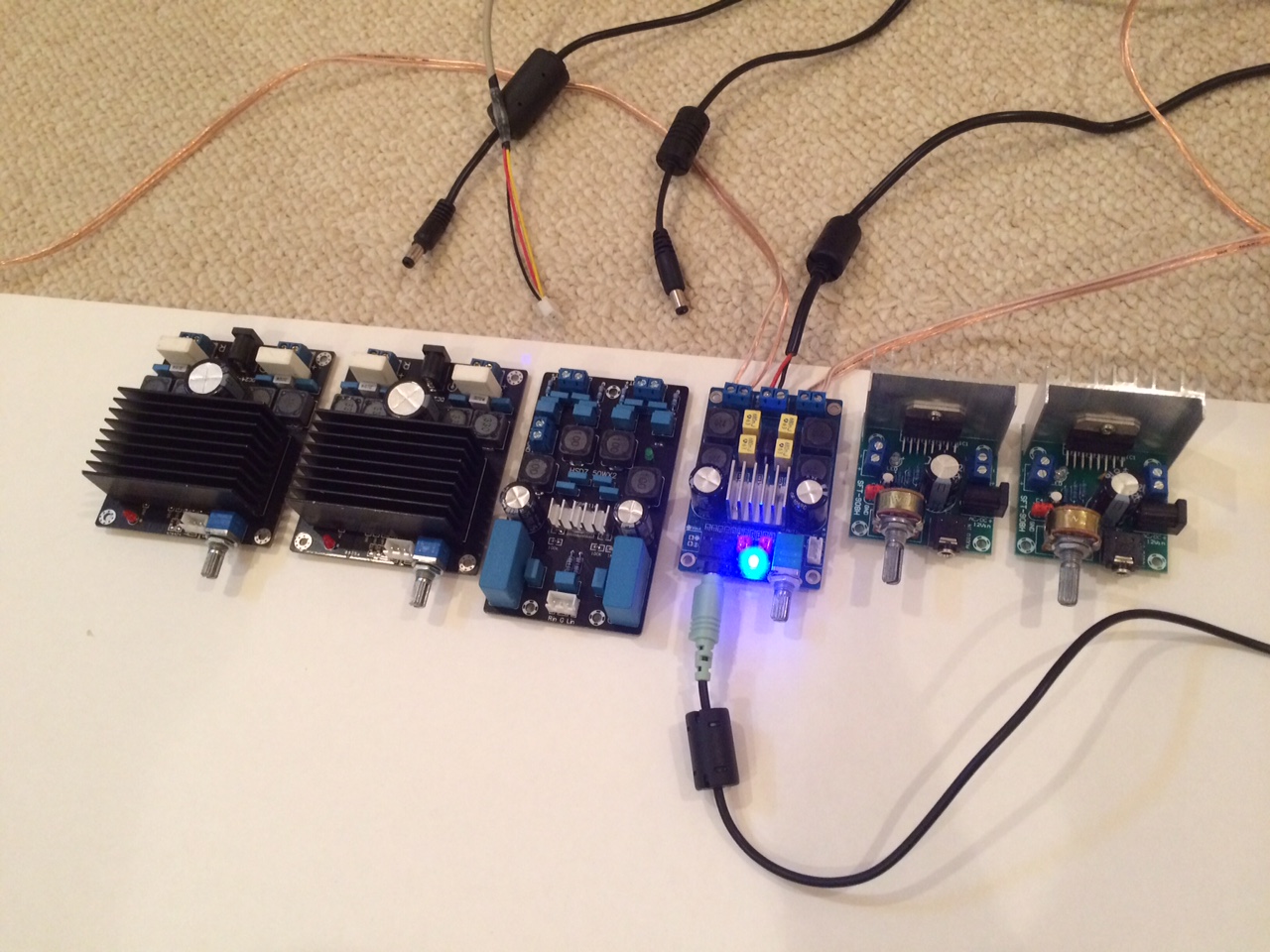
First thing I noticed was the amazing stereo phantom image I can get from full range drivers. No XO to muck with the phase so sound stage is very clearly defined.
Main purpose was to test overall sound and whether or not they are DOA.
They all sound very nice, with the cheap TDA7498's of course, being able to pack a real punch. The bad thing with the 7498's is that the speaker polarity is mis-labeled. If you connect as shown (R) -/+ and (L) -/+ you immediately hear that wierd phasiness. I swapped the (R) to +/- and immediately it improved and sounded normal. I also took a frequency spectrum to make sure bass wasn't cancelling and it's all good.
The SMAKN sounded really nice - musical and clear. The extra gain required turning the volume down.
The fake YJ blueblack was actually also decent sounding - did not detect any issues like Lo Tse had with his not sounding good.
The little $5 TDA7297's were surprisingly clear sounding, not as loud but for their range, quite formidable. I would almost want to try these to power the tweeters for my next project.
Good fun testing. The neat thing about using a full range speaker is that the step response and impulse response are magical. Drum solos have great realism due to timing accuracy.
I finally had time to test all the recent cheap amps that have arrived from Aliexpress and Amazon. I set up my 0.53x Karlsonator speakers fitted with Dayton 5in PA120-8 pro audio full range drivers. I found several power supplies for all the different amps: 12v, 19v, 24v, and made a 3-pin header to 3.5mm stereo jack. Set them all up side by side and listened to them one after another.
Amps included:
qnty 2 x TDA7498 (black heatsinks)
qnty 1 x fake YJ blueblack (Danzz) TPA3116D2
qnty 1 x SMAKN TPA3116D2
qnty 2 x 'lunch money' TDA7297 class AB
Here are TDA7498's and fake YJ blueblack:

Here is the whole lot with SMAKN currently under test (note assortment of power leads and audio input leads):

First thing I noticed was the amazing stereo phantom image I can get from full range drivers. No XO to muck with the phase so sound stage is very clearly defined.
Main purpose was to test overall sound and whether or not they are DOA.
They all sound very nice, with the cheap TDA7498's of course, being able to pack a real punch. The bad thing with the 7498's is that the speaker polarity is mis-labeled. If you connect as shown (R) -/+ and (L) -/+ you immediately hear that wierd phasiness. I swapped the (R) to +/- and immediately it improved and sounded normal. I also took a frequency spectrum to make sure bass wasn't cancelling and it's all good.
The SMAKN sounded really nice - musical and clear. The extra gain required turning the volume down.
The fake YJ blueblack was actually also decent sounding - did not detect any issues like Lo Tse had with his not sounding good.
The little $5 TDA7297's were surprisingly clear sounding, not as loud but for their range, quite formidable. I would almost want to try these to power the tweeters for my next project.
Good fun testing. The neat thing about using a full range speaker is that the step response and impulse response are magical. Drum solos have great realism due to timing accuracy.
Attachments
I have confidence that I am not alone in marveling at your generosity in documenting this project. It is very helpful and cool.
You have been comparing these boards to one another and I have been wondering about about what makes a good implementation of a chip in a chip amp. Layout, component choices are being discussed and I am learning a lot.
The issue of power supply in terms of capacitance and in terms of power supply noise as in ripple, etc. does not seem to effect these chip amps the way power supplies effect discrete amplifiers. So, are the demands of transients less demanding for a chip amp? And as far as regulation goes, are these chip amps more robust relative to power supply noise than discrete amps?
You have been comparing these boards to one another and I have been wondering about about what makes a good implementation of a chip in a chip amp. Layout, component choices are being discussed and I am learning a lot.
The issue of power supply in terms of capacitance and in terms of power supply noise as in ripple, etc. does not seem to effect these chip amps the way power supplies effect discrete amplifiers. So, are the demands of transients less demanding for a chip amp? And as far as regulation goes, are these chip amps more robust relative to power supply noise than discrete amps?
For class D amps where the current is switched from 0 to 100% 400,000 times a second I don't think a few percent ripple will be that audible. SMPS are actually quite clean and sound nice. I use $6 laptop bricks and compared them to name brand HP or Dell bricks and can't tell difference. Some folks say the Astron linear PS's sound better. But I would rather have 19v than 13.8v.
Last edited:
My second pair of 7492's just came in. They have Rubycons with a K pattern in top. My 7498's have Nichicons with 4 star score on top of cap. Wonder if these are real.
My 7498's have Nichicons with 4 star score on top of cap. Wonder if these are real.
One of those blew up on my desk a few weeks ago.
The amp is wrecked since that.
The earlier boards had different caps.
xrk, how do you like the black 7498 compared to the cheap blue 7492?
I am comparing the sound quality between the two as I type. Based on 4 sound tracks so far, both un-modified stock 7492 (second batch with orange drop caps) and 7498 (black heat sink with pot, LED, mislabeled Right speaker out), running 19v supply on both, I have to give it to the 7498. Quite a bit more ease of HF presentation and bass has more weight. It just seems easier sounding, and I think is quite a nice amp in SQ and build quality for $11ea. I was not happy with the bad packaging though - just plastic wrap on the amp and placed in plastic mail bag, two amps bumped and scratched each other in transport so heat sinks are all dinged up. Other amps came in foam and bubble wrap and some, like 7297, a box even. Packaging notwithstanding, they sound very nice.
Current rack of amps under comparative and DOA testing...
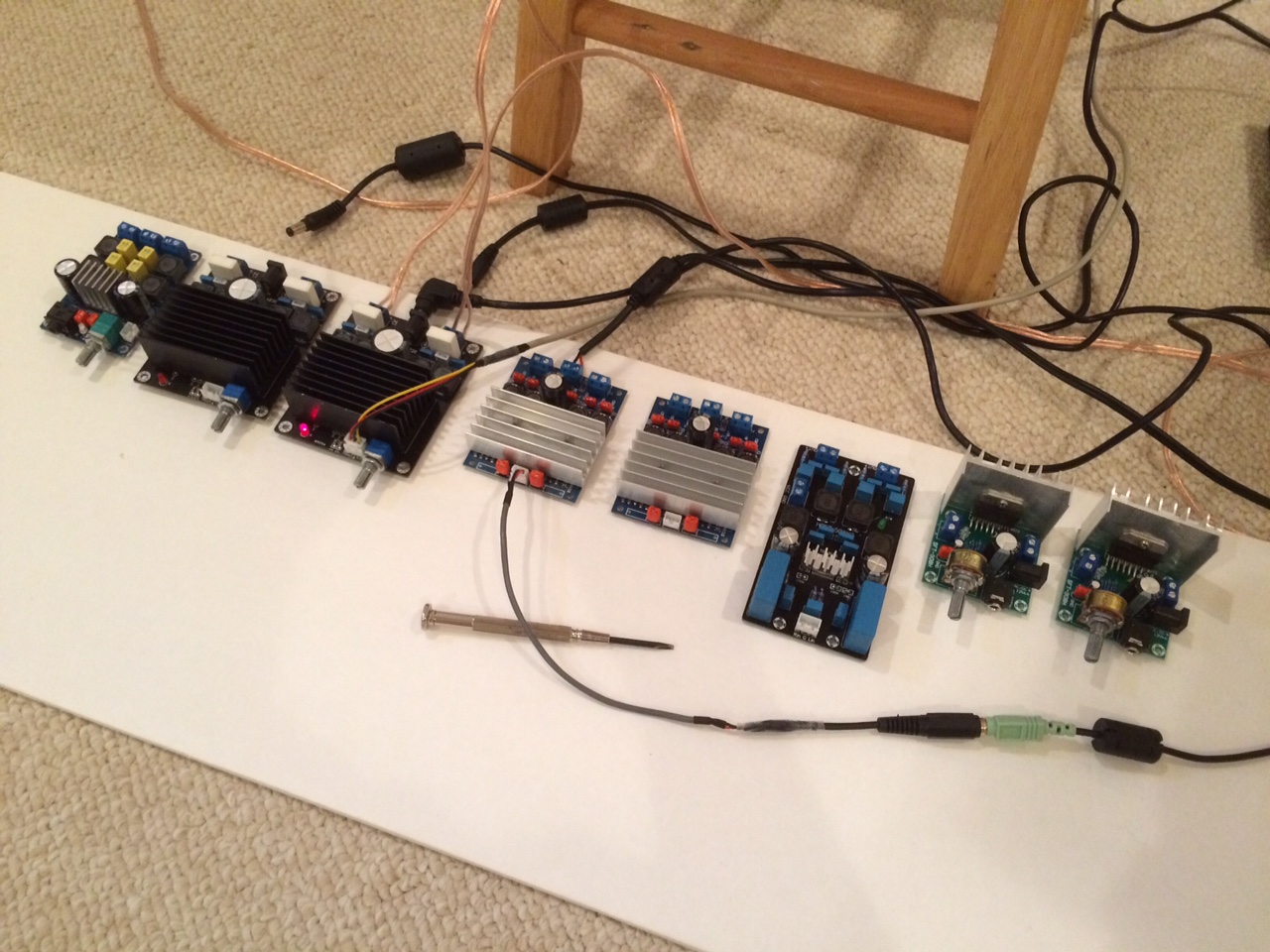
Attachments
Last edited:
Oooh thats alot of amps...
And still probably not going above $100 for the lot!
Good times, when good sound can come out of these mini amps!
And still probably not going above $100 for the lot!
Good times, when good sound can come out of these mini amps!
Yes, got to love it! $80 for all these amps (free shipping). 😀
I am comparing the sound quality between the two as I type......
that's my impression, too.
if somebody searches for a cheap amp to power 8ohm speakers, the black 7498 would be my advice atm.
The heat sink comes off the TDA7498
I just got a good tip from Timpert on another thread to watch out for improperly used components on class D amps (especially the 7498 as an example) from Trevor Marshall - http://www.trevormarshall.com/class-d-tutorial/. In the article by Marshall, he showed how a single improperly used x7r resistor on the output snubber (post LC) of a Sure TDA7498 caused the HD to hit 2-34% since the caps are not designed to handle high currents. swapping that single part to an MKP drop HD by 10x! Anyhow, that got me curious so I popped the bonnet open on this engine to see what is under the hood.
What I see so far looks pretty good, and we can see that this board is anonymous (no Feixiang label) and uses metalized film caps for output filters. There is even a 5watt sand filled high power 2.2ohm resistor on the output snubber. The heatsink is mounted properly with isolation washers and grommets and uses real heatsink compound.
Listening to Ann Bisson on this amp now and it sounds exceptionally clean and clear with lots of headroom using a 24v SMPS brick.
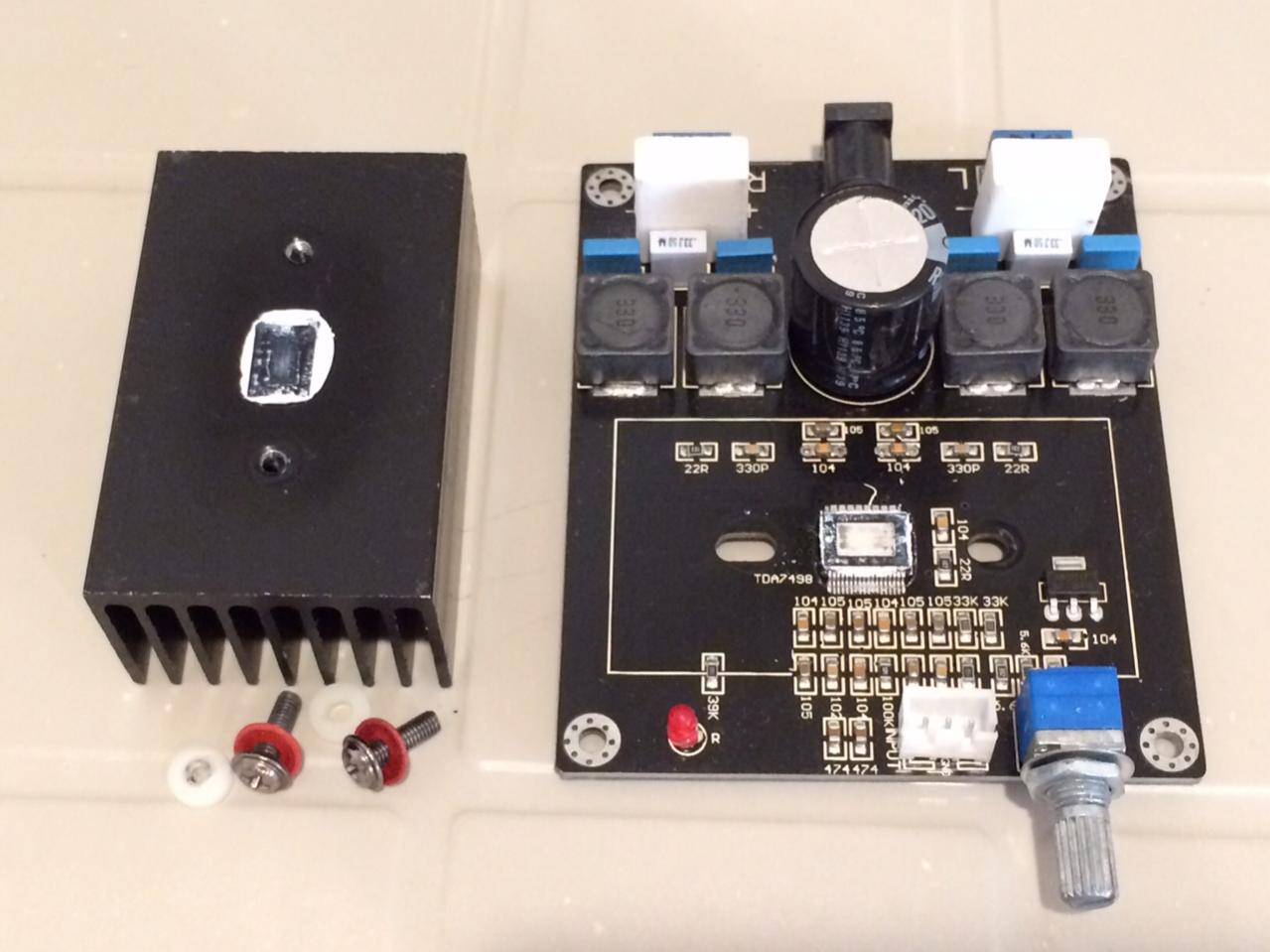
I just got a good tip from Timpert on another thread to watch out for improperly used components on class D amps (especially the 7498 as an example) from Trevor Marshall - http://www.trevormarshall.com/class-d-tutorial/. In the article by Marshall, he showed how a single improperly used x7r resistor on the output snubber (post LC) of a Sure TDA7498 caused the HD to hit 2-34% since the caps are not designed to handle high currents. swapping that single part to an MKP drop HD by 10x! Anyhow, that got me curious so I popped the bonnet open on this engine to see what is under the hood.
What I see so far looks pretty good, and we can see that this board is anonymous (no Feixiang label) and uses metalized film caps for output filters. There is even a 5watt sand filled high power 2.2ohm resistor on the output snubber. The heatsink is mounted properly with isolation washers and grommets and uses real heatsink compound.
Listening to Ann Bisson on this amp now and it sounds exceptionally clean and clear with lots of headroom using a 24v SMPS brick.

Attachments
Last edited:
i posted the circuit of the output filter a while back in this thread:
http://www.diyaudio.com/forums/class-d/265387-ebay-cheap-tda7498-boards-2.html#post4135019
btw my black 7498 boards are labeled 'yuanjing'
http://www.diyaudio.com/forums/class-d/265387-ebay-cheap-tda7498-boards-2.html#post4135019
btw my black 7498 boards are labeled 'yuanjing'
You are certain about that 5w resistor? Seems like a filter to make ampboard single ended, completely remove negative output, 2.2R ?
You are certain about that 5w resistor? Seems like a filter to make ampboard single ended, completely remove negative output, 2.2R ?
The circuit appears to be similar to the one Buehgemeiste has drawn below, with the exception that the 2.2R does not connect to ground - I get 250kohm between it and GND. It would appear to be a "symmetric snubber" kind of the like the pre LC filter 22R and 330pF. Perhaps this is one reason why the 7498 sounds better than the 7492? Maybe some would call it a Zobel? Anyhow it uses a big white power resistor that is labeled "5W 2.2ohm 1%"

Last edited:
Ok, then it probably is a little higher frequency filter/zobel than Trevor Marshall's, but similar
xrk, which SMPS 24V brick you're using?
I've got a couple of 7498 boards, and power supply is a pain 🙁
Currently using a good 20V / 6.5A brick - no complaints on the sound 🙂
I'm thinking of trying out 24V bricks, but those are relatively rare, unlike 24V "cage" power supplies - which then need to be put into some kind of enclosure.... (lot of extra unnecessary work - a 24V "brick" would be a lot easier, less hassle)...
Any ebay sources for reliable 24V "bricks"?
BTW, attachment shows some of my enclosures.... definitely no room for an integrated power supply 🙂 - they all use external "laptop bricks"...
I've got a couple of 7498 boards, and power supply is a pain 🙁
Currently using a good 20V / 6.5A brick - no complaints on the sound 🙂
I'm thinking of trying out 24V bricks, but those are relatively rare, unlike 24V "cage" power supplies - which then need to be put into some kind of enclosure.... (lot of extra unnecessary work - a 24V "brick" would be a lot easier, less hassle)...
Any ebay sources for reliable 24V "bricks"?
BTW, attachment shows some of my enclosures.... definitely no room for an integrated power supply 🙂 - they all use external "laptop bricks"...
Attachments
- Home
- Amplifiers
- Class D
- TDA7492 Amp
